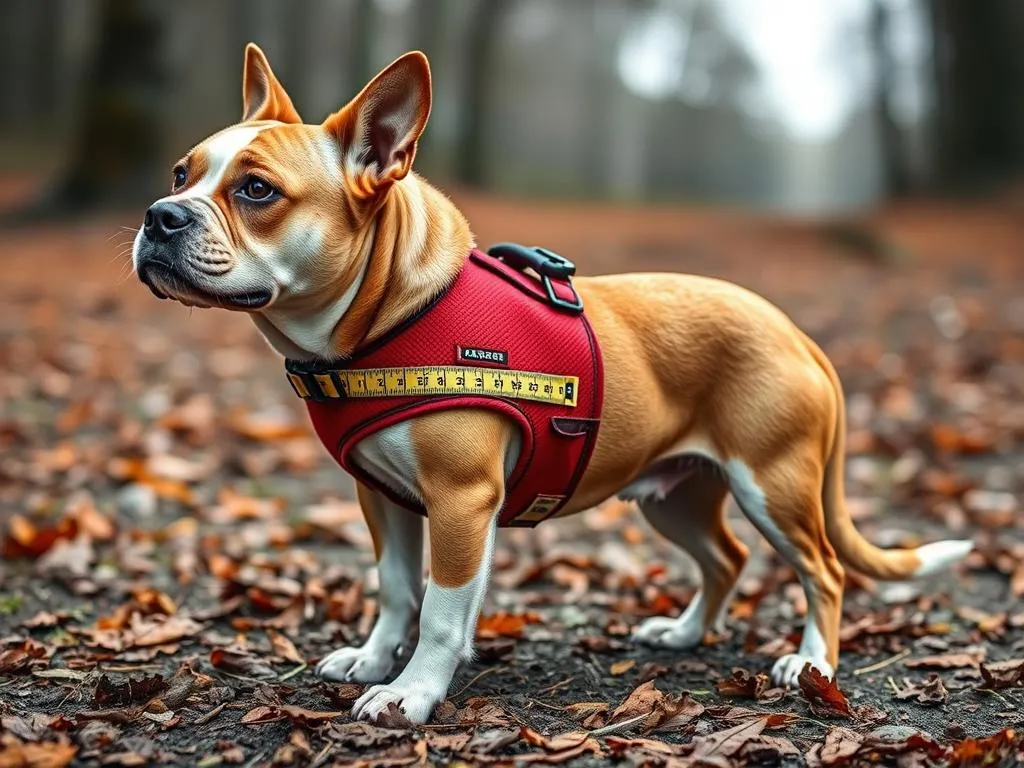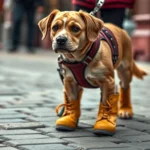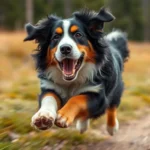
Ensuring your dog is comfortable and secure while walking is essential for their overall health and safety. One of the best ways to achieve this is by using a properly fitted harness instead of a traditional collar. Harnesses provide better control, reduce the risk of injury, and prevent strain on your dog’s neck, especially for breeds prone to respiratory issues or those that pull on the leash. Understanding how to measure your dog for a harness is the first step in ensuring a good fit.
Understanding Dog Harnesses
Types of Dog Harnesses
There are several types of harnesses available, each designed for specific needs and situations:
-
Front-Clip Harnesses: These harnesses have a leash attachment at the front. They are great for dogs that pull, as they redirect their movement and reduce pulling behavior.
-
Back-Clip Harnesses: These harnesses attach at the back and are suitable for well-trained dogs. They are easy to put on and take off but may encourage pulling in some dogs.
-
No-Pull Harnesses: These are specially designed to discourage pulling. They often have a front attachment point and may include additional features for comfort.
Each type of harness has its benefits, so it’s essential to choose one that aligns with your dog’s behavior and your walking style.
Importance of a Properly Fitted Harness
A poorly fitted harness can lead to various health issues for your dog. Skin chafing, breathing difficulties, and discomfort are just a few concerns that arise from an ill-fitting harness. Conversely, a well-fitted harness enhances your dog’s comfort and gives you better control during walks. This can make the difference between an enjoyable outing and a stressful one for both you and your dog.
Preparing for Measurement
Tools Needed
To accurately measure your dog for a harness, you’ll need a few essential tools:
- Measuring Tape: A flexible measuring tape is ideal for measuring your dog’s body.
- Pen and Paper: Keep track of your measurements.
- Treats (optional): Having some treats on hand can help keep your dog calm and distracted during the measurement process.
For the best results, measure your dog in a calm environment where they feel comfortable and relaxed.
Understanding Dog Body Parts
When measuring your dog, focus on key areas:
- Neck: The circumference around the base of the neck.
- Chest/Girth: The widest part of the chest, typically just behind the front legs.
- Length (if applicable): The length from the base of the neck to the base of the tail.
Familiarizing yourself with these areas will help ensure you take accurate measurements.
How to Measure Your Dog for a Harness
Step-by-Step Measurement Guide
Step 1: Measure the Neck Circumference
- Place the measuring tape around the base of your dog’s neck, ensuring it’s snug but not too tight.
- Record the measurement at the point where the tape overlaps. You should be able to fit two fingers between the tape and your dog’s neck.
Step 2: Measure the Chest/Girth
- Wrap the measuring tape around the widest part of your dog’s chest, just behind the front legs.
- Ensure the tape is level and snug but not constricting. Record the measurement.
Step 3: Measure the Length (if applicable)
- For harnesses that require length measurements, measure from the base of the neck (where the collar sits) to the base of the tail.
- Keep the tape straight along the dog’s back and take note of this measurement.
Tips for Measuring Different Dog Breeds
Different breeds may require unique considerations during measurement:
- Small Breeds: Use a lightweight measuring tape to avoid stressing the dog. Ensure they’re standing comfortably.
- Medium Breeds: Follow the standard measuring process but consider their body shape (e.g., barrel-chested breeds may need additional measurements).
- Large Breeds: Ensure you have a helper if needed, as larger dogs may be less cooperative. Measure while they’re standing to get accurate measurements.
For unique breeds like Dachshunds or Bulldogs, take extra care with their specific body shapes and adjust your measuring techniques accordingly.
Choosing the Right Harness Size
Understanding Size Charts
Once you have your measurements, it’s time to select the right harness size. Most brands provide a size chart that correlates measurements to sizes (e.g., S, M, L).
- S: Typically fits necks around 10-14 inches and chests around 12-16 inches.
- M: Fits necks around 14-20 inches and chests around 18-24 inches.
- L: Fits necks around 18-26 inches and chests around 24-32 inches.
It’s important to refer to each brand’s specific chart as sizes can vary.
Adjustability and Fit
Look for harnesses that offer adjustable straps. This feature allows for a custom fit that can accommodate your dog’s body shape and size fluctuations. When fitting the harness on your dog, ensure that it’s snug but allows for two fingers to fit comfortably between the harness and your dog’s skin.
Testing the Harness Fit
How to Properly Fit the Harness on Your Dog
- Begin by placing the harness over your dog’s head and adjusting the straps as needed.
- Fasten the harness securely, ensuring it sits evenly on your dog’s body.
- Check the fit: you should be able to fit two fingers between the harness and your dog’s skin without any discomfort.
Observing Your Dog’s Reaction
Watch how your dog reacts to the harness. Signs of discomfort may include:
- Excessive scratching or biting at the harness.
- Whining or attempting to remove the harness.
- Difficulty walking or unusual gait.
If you notice any of these signs, it may be necessary to adjust the harness or try a different style that better fits your dog’s body shape.
Common Issues and Solutions
Troubleshooting Fit Problems
If the harness slips or causes chafing, consider the following solutions:
- Adjust the Straps: Ensure all adjustable parts are properly fitted.
- Try a Different Style: Some harness designs work better for certain body shapes. If a back-clip harness isn’t fitting well, consider a front-clip or no-pull harness.
When to Consult a Professional
In cases where your dog has special needs or unique body conformations, it may be beneficial to seek professional advice from a veterinarian or a professional dog trainer. They can provide guidance on harness selection and fitting.
Conclusion
Measuring your dog for a harness is a straightforward process that can greatly enhance their walking experience. A properly fitted harness not only ensures comfort and safety but also allows for better control during walks. Taking the time to accurately measure and select the right harness will contribute significantly to your dog’s overall health and happiness. Don’t hesitate to share your experiences or ask questions as you embark on this important aspect of dog care!









